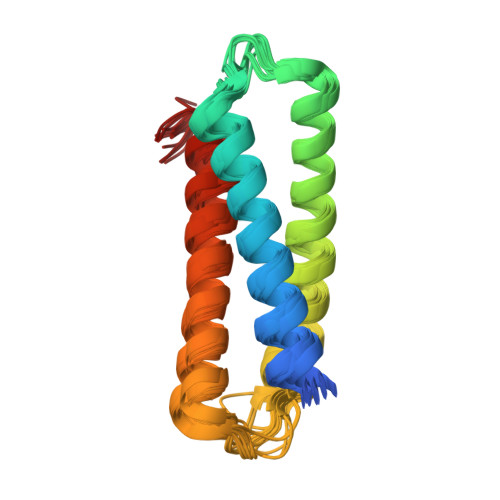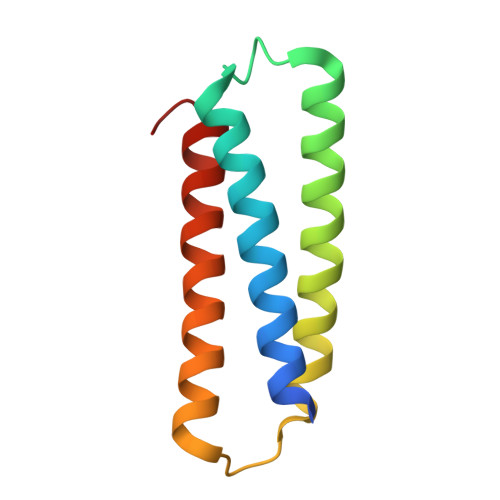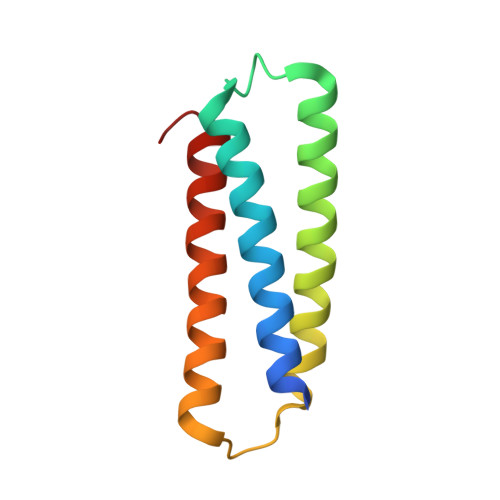Tom1 Modulates Binding of Tollip to Phosphatidylinositol 3-Phosphate via a Coupled Folding and Binding Mechanism.
Xiao, S., Brannon, M.K., Zhao, X., Fread, K.I., Ellena, J.F., Bushweller, J.H., Finkielstein, C.V., Armstrong, G.S., Capelluto, D.G.(2015) Structure 23: 1910-1920
- PubMed: 26320582
- DOI: https://doi.org/10.1016/j.str.2015.07.017
- Primary Citation of Related Structures:
2N2N, 2N31 - PubMed Abstract:
Early endosomes represent the first sorting station for vesicular ubiquitylated cargo. Tollip, through its C2 domain, associates with endosomal phosphatidylinositol 3-phosphate (PtdIns(3)P) and binds ubiquitylated cargo in these compartments via its C2 and CUE domains. Tom1, through its GAT domain, is recruited to endosomes by binding to the Tollip Tom1-binding domain (TBD) through an unknown mechanism. Nuclear magnetic resonance data revealed that Tollip TBD is a natively unfolded domain that partially folds at its N terminus when bound to Tom1 GAT through high-affinity hydrophobic contacts. Furthermore, this association abrogates binding of Tollip to PtdIns(3)P by additionally targeting its C2 domain. Tom1 GAT is also able to bind ubiquitin and PtdIns(3)P at overlapping sites, albeit with modest affinity. We propose that association with Tom1 favors the release of Tollip from endosomal membranes, allowing Tollip to commit to cargo trafficking.
Organizational Affiliation:
Protein Signaling Domains Laboratory, Department of Biological Sciences, Virginia Bioinformatics Institute, Virginia Tech, Blacksburg, VA 24061, USA.


















